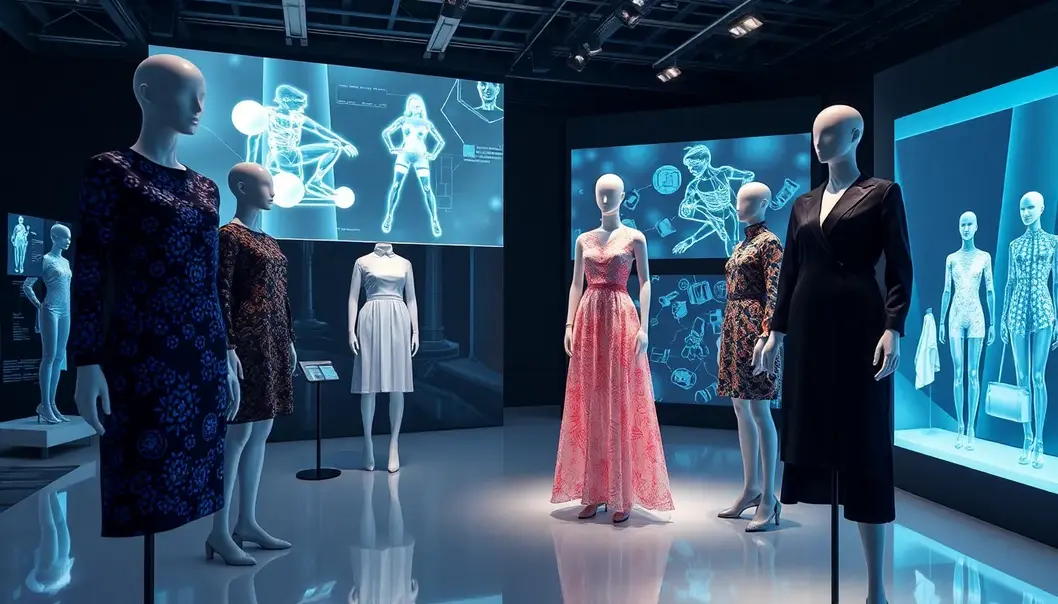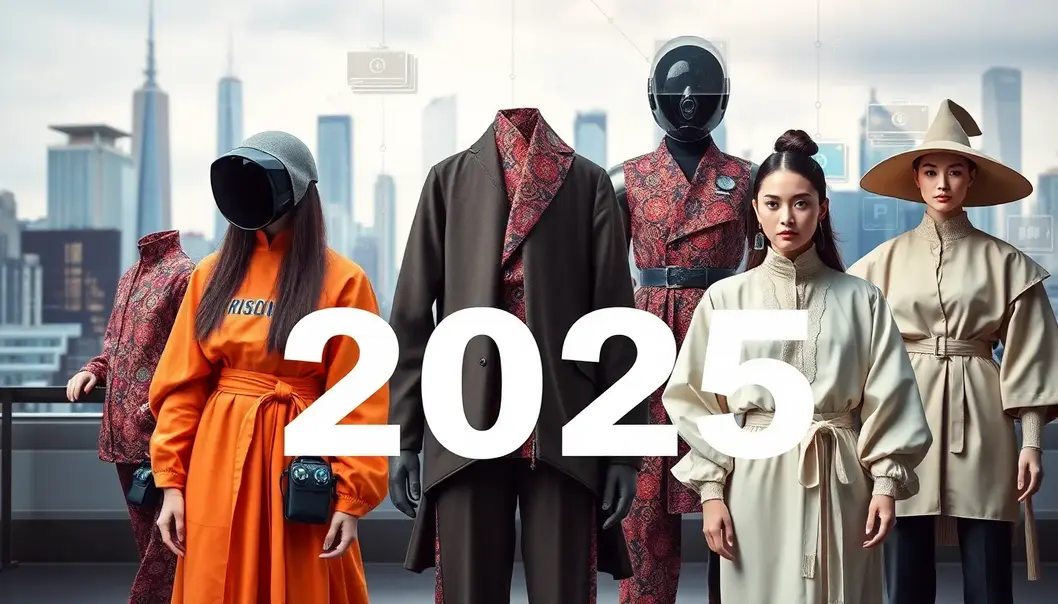As the world hurtles towards 2025, the fashion landscape is poised for a seismic transformation. A heady mix of advanced technology, sustainability consciousness, and a nod to heritage styles is shaping an exciting future for fashion aficionados and industry mavens alike. While technological innovations push boundaries, a resurgence of traditional craftsmanship emphasizes the authenticity and storytelling that garments can convey. Let’s delve into the anticipated trends that promise a visionary fusion of the new and the nostalgic.
Technological Marvels in Fashion

The year 2025 marks an exhilarating era where the fusion of technology and fashion has reached new heights, transforming how we perceive and interact with garments. Prominent among these advancements are smart textiles, which have transcended traditional fabric limitations to include features such as climate regulation, health monitoring, and adaptive color changes. These innovative materials redefine clothing beyond aesthetics and into the realm of highly functional wearables, catering to both fashion enthusiasts and tech-savvy consumers alike.
3D printing technology has revolutionized garment creation, offering an unprecedented level of customization and minimal waste. Designers can now materialize intricate patterns and textures directly from their imagination into physical forms, facilitating a bespoke experience for consumers seeking individuality. This technology not only accelerates the production timeline but also empowers small-scale designers to compete on a global stage without the need for extensive inventories.
Artificial intelligence further enhances this personalized approach by driving customization to an unparalleled scale. AI algorithms analyze consumer preferences and body data to curate tailored wardrobe suggestions, making shopping experiences more intuitive and satisfying. These advancements are integral in enhancing consumer accessibility to fashion, breaking down geographical and physical barriers.
In the digital realm, virtual fashion shows and augmented reality (AR) try-ons have revolutionized how collections debut and how customers experience garments before purchase. Digital fashion shows, often hosted in virtual spaces, allow designers to present their collections to a global audience without the logistical constraints of traditional runway shows. These online spectacles provide an immersive experience, marrying creativity and digital artistry to captivate audiences worldwide.
Virtual try-ons, using AR technology, enable customers to visualize how garments fit and look on their own bodies without physically trying them on. This innovation not only enhances the shopping experience by reducing return rates but also contributes to sustainability by minimizing unnecessary shipments. As the fashion industry embraces these digital transformations, consumers are empowered with greater transparency and confidence in their purchasing decisions.
Ultimately, the intersection of technology and fashion in 2025 offers an exciting vista of innovation that not only redefines consumer experiences but also elevates the functionalities of garments. As the industry continues on this technological trajectory, it sets a promising stage for the seamless blending of fashion, functionality, and personalization.
Reimagining Heritage and Sustainability

As we look towards 2025, the fashion industry is engaged in an inspiring dance of past and present. The renewed interest in heritage styles is not merely a nostalgic glance backward but a pioneering leap towards sustainability. Designers are rediscovering and revamping traditional craftsmanship with an eco-friendly ethos at the forefront of their creations.
Heritage craftsmanship, often seen as the pinnacle of timeless fashion, is undergoing a renaissance, accentuated by the industry’s drive towards sustainability. Techniques such as intricate embroidery, handloom weaving, and detailed garment tailoring, once sidelined by mass production and fast fashion, are now the hallmarks of luxury sustainable fashion. This resurgence is not about replicating the past, but rather infusing these time-honored methods with contemporary design sensibilities to craft pieces that are both revered for their heritage and relevant to modern tastes.
One of the most impactful sustainability practices taking root is upcycling. This innovative method transforms pre-existing garments into new creations, reducing waste and valuing the story woven into each piece of fabric. Designers are turning yesterday’s textiles into tomorrow’s treasures, embracing imperfections and the unique history of materials. Such practices ensure that each piece speaks volumes not only of fashion trends but also of the wearer’s commitment to environmental consciousness.
Furthermore, sustainable sourcing has become imperative, with designers increasingly seeking materials that boast minimal environmental footprints. The revival of organic cottons, hemp, and bamboo fabrics, all procured with rigorous ecological considerations, is central to this movement. In doing so, they bridge the gap between ethical responsibility and the desire for high-quality, culturally-rich textiles.
Through this lens, modern silhouettes are crafted not just to please the eye but to tell stories—stories that celebrate cultural narratives of the past while embracing innovative materials and techniques. These designs are formed with the savviness of today’s eco-conscious consumers in mind. Consumers who are keenly aware that their clothing choices can contribute to a more sustainable future. The appeal lies in garments that are more than just covers—they are tapestries of tradition interspersed with sustainable innovation.
Fashion houses are not only embedding these practices in their design ethos but are also engaging in dialogues that emphasize the importance of preserving cultural heritages amidst an eco-conscious canvas. This transformation is being embraced wholeheartedly across the globe, reflecting a universal desire to create and wear garments that honor the past while responsibly innovating for the future.
As we anticipate the trends that 2025 will cement in the world of fashion, it is clear that the fusion of traditional craftsmanship with sustainable innovation is not merely a trend but the future. This not only caters to the aesthetic sensibilities of fashion enthusiasts but aligns perfectly with the increasing demand for transparency and responsibility within the industry. The brands that recognize this paradigm shift are those ensuring their legacy while safeguarding the planet’s future.
Final words
2025 marks a pivotal year where fashion fuses ingenuity with tradition, providing a landscape brimming with opportunities for creativity and innovation. By embracing technological advancements while valuing the heritage and sustainability of fashion, industry players are set to captivate audiences with styles that are not only aesthetically pleasing but also ethically responsible. This seamless integration signifies a promising future that fashion lovers can eagerly anticipate.
Explore the future of fashion with our exclusive collection that merges innovation and tradition. Visit us today!
Learn more: https://www.futurefashion2025.com
About us
Future Fashion 2025 offers a curated selection of garments that embody the perfect harmony between innovation and heritage craftsmanship. By integrating state-of-the-art technology with sustainable practices, our collections cater to the discerning consumer who values style, story, and sustainability. Explore our lines of smart textiles and eco-friendly materials designed for the modern world.

